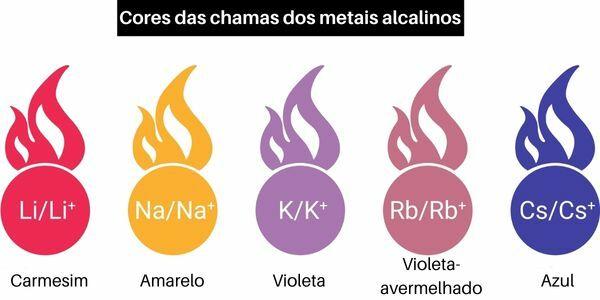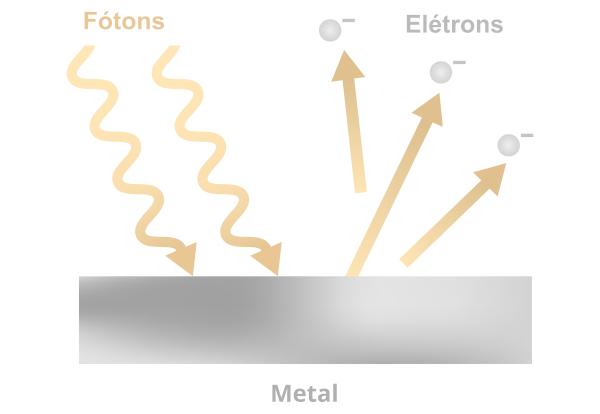A division of history It is a way of categorizing past events into distinct periods, providing a chronological framework for analysis. This approach makes it easier to understand social, political, cultural and economic changes over time.
A General history is traditionally divided into five periods:
- Prehistory, covering the emergence of hominids;
- Ancient Age, with civilizations such as Mesopotamia and Rome;
- Middle Ages, marked by feudal society;
- Modern Age, a period of significant transformations; It is
- Contemporary Age, which encompasses recent events such as world wars and the Cold War.
A Brazilian history follows a similar division, including periods such as:
- Pre-Colonial;
- Colonial Brazil, with Portuguese exploration and slavery;
- Brazil Empire, with the monarchy;
- Old Republic, with political instability;
- Vargas era, with reforms and industrialization;
- Populist Republic, with democratic governments, but with political instability;
- Military Dictatorship, a period of political restrictions;
- New Republic, initiated after the end of the redemocratization that occurred between 1974 and 1985.
Read too: History — the science that studies human actions over time
Topics in this article
- 1 - Summary of the division of history
- 2 - What is the division of history?
-
3 - What are the periods of history?
- → Prehistory
-
4 - → Ancient Age
- → Middle Ages
- → Modern Age
- → Contemporary Age
-
5 - Division of Brazilian history
- → Pre-Colonial Period
- → Brazil Colony
- → Brazil Empire
- → Old Republic
- → Vargas Era
- → Populist Republic
- → Military Dictatorship
- → New Republic
- 6 - What are the criticisms of the division of history?
- 7 - Solved exercises on the division of history
Summary about the division of history
- The division of history is the practice of categorizing past events into distinct periods to facilitate the study and understanding of social, political, cultural and economic changes throughout of time.
- The division of general history consists of the following periods: Prehistory, Ancient Ages, Middle Ages, Modern Ages and Contemporary Ages.
- The division of Brazilian history consists of the following periods: Pre-Colonial Period, Brazil Colony, Empire Brazil, Old Republic, Vargas Era, Populist Republic, Military and New Dictatorship Republic.
- There are several criticisms of the division of history, such as Eurocentrism, chronological rigidity, neglect of local histories and marginalized groups, and a teleological vision.
What is story division?
The division of history is the categorization of past events into distinct periods, facilitating the analysis and systematic study of these events. This practice helps to understand the social, political, cultural and economic changes that have occurred over time.
The division of history allows historians and scholars to organize events in a logical and chronological manner, providing a framework that facilitates comparative analysis and the identification of historical patterns.
History is commonly divided into broad periods that reflect significant changes in society and human development. These periods help highlight fundamental transformations, allowing a clearer view of the causes and consequences of historical events.
Do not stop now... There's more after the advertising ;)
What are the periods of history?
History is traditionally divided into five major periods: Prehistory, Ancient Ages, Middle Ages, Modern Ages and Contemporary Ages.
→ Prehistory

Prehistory is the period that precedes the emergence of writing and, consequently, historical documentation. It covers from the emergence of the first hominids to the emergence of the first civilizations. During this time, humans were nomadic and depended on hunting, fishing, and gathering to survive. Prehistory is subdivided into Paleolithic, Mesolithic and Neolithic, each characterized by technological advances and changes in human lifestyle. To learn more about Prehistory, click here.
→ Ancient Age

Old age is the period that covers the centuries before the 5th century of the Common Era. The civilizations of Mesopotamia, Egypt, India, China and Africa flourished there. It is the historical moment of the emergence and development of the first organized human societies, the cradle of human civilization. To learn more about the Ancient Age, click here.
→ Middle Ages

The Middle Ages is the period that extends approximately from the 5th century to the 15th century and is marked by the fall of the Roman Empire and the rise of feudalistic societies in Europe. During the Middle Ages, the Church played a central role in everyday life, and society was hierarchical in social classes. The Renaissance, which occurred at the end of the Middle Ages, brought a revival of the arts, sciences, and humanistic thought. To learn more about the Middle Ages, click here.
→ Modern Age

The Modern Age is the period from the 15th century to the 18th century and is characterized by significant changes in all aspects of life. This period includes maritime expansion, the Protestant Reformation, the Scientific Revolution, and the Enlightenment. The Modern Age also witnessed the emergence of centralized national states, with absolute monarchies, and the beginning of capitalism as the dominant economic system. To learn more about the Modern Age, click here.
→ Contemporary Age
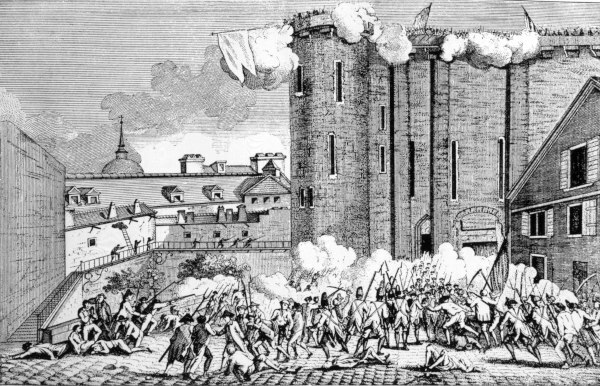
The Contemporary Age is the period that covers events from the end of the 18th century to the present day. Includes the French Revolution, the Industrial Revolution, the world wars, the Cold War, the independence and decolonization, as well as the technological advances and social changes that characterize the world modern. To learn more about the Contemporary Age, click here.
Division of Brazilian history
The history of Brazil is divided into periods that reflect social, political and cultural changes over time. They are the Pre-Colonial Period, Colonial Brazil, Empire Brazil, Old Republic, Vargas Era, Populist Republic, Military Dictatorship and New Republic.
→ Pre-Colonial Period
The pre-colonial period is the period that covers the history of Brazil before the arrival of European colonizers. It includes the various indigenous societies that inhabited Brazilian territory and their complex social and cultural structures. Indigenous peoples were distributed throughout the country, with different ways of life that varied according to the environment in which they lived. To learn more about the Pre-Colonial Period, click here.
→ Brazil Colony
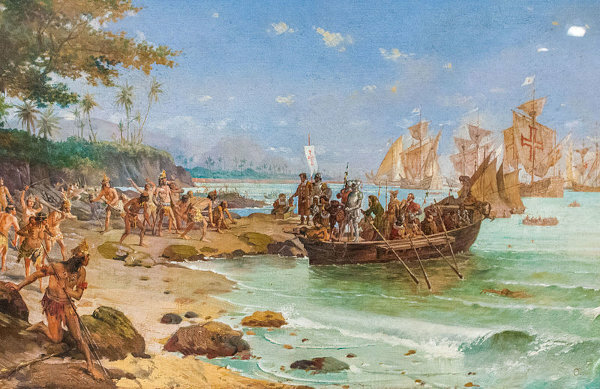
Brazil Colony It is the period that begins with the arrival of the Portuguese in 1500 and lasts until Brazil's independence in 1822. During this time, Brazil was economically exploited by colonizers, mainly through sugar production and slave labor. Society was hierarchical, with a dominant colonial elite and a population largely made up of enslaved Africans and indigenous people. To learn more about Brazil Colony, click here.
→ Brazil Empire

Brazil Empire is the period that begins after Brazil's independence from Portugal. After independence, Brazil became a monarchy, with Dom Pedro I as emperor. The imperial period runs from 1822 to 1889, when the monarchy was replaced by the republic. During the empire, Brazil faced challenges, such as the Paraguayan War. To learn more about Brazil Empire, click here.
→ Old Republic
The Old Republic is the period that goes from 1889 to 1930 and was marked by political instability, alternation of power between oligarchic groups and social movements, such as the Vaccine Revolt and the Whip Revolt. During this period, the Brazilian economy underwent transformations with the expansion of coffee. To learn more about the Old Republic, click here.
→ Vargas Era
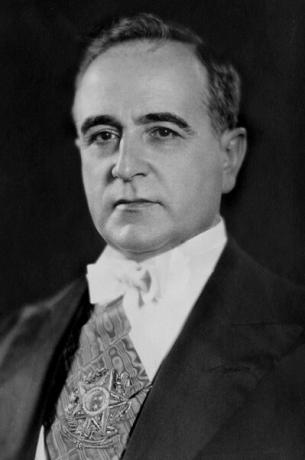
Vargas era is the period in which Getúlio Vargas governed the country. Getúlio Vargas assumed the presidency in 1930 and governed for much of the period from 1930 to 1945, being interrupted for a short period during the Estado Novo dictatorship (1937-1945). The Vargas Era was marked by labor reforms, industrialization and significant social changes. To learn more about the Vargas Era, click here.
→ Populist Republic
Populist Republic is the democratic period that lasted from 1946 to 1964. The post-World War II period was characterized by democratic governments and elected presidents, however, political instability persisted, with frequent changes of presidents and crises economic. To learn more about the Populist Republic, click here.
→ Military Dictatorship
The Military Dictatorship in Brazil is the period that extended from 1964 to 1985. It began with a military coup that deposed the democratic government. During this period, there were restrictions on civil liberties, censorship, political persecution and human rights violations. To learn more about the Military Dictatorship in Brazil, click here.
→ New Republic
The New Republic is the period that began after the redemocratization of Brazil, which occurred from the mid-1980s, culminating in the election of a civilian president in 1985. This period was marked by the return of democratic institutions, the promulgation of a new Constitution in 1988, and the consolidation of the democratic regime.
Since the advent of redemocratization in 1985, Brazil has witnessed a sequence of governments marked by a diversity of political and economic approaches. The first president elected during this period was José Sarney, who took office during the democratic transition after years of Military Dictatorship. Sarney faced considerable challenges, including hyperinflation, but his tenure was crucial to the country's stabilization. José Sarney was succeeded by Fernando Collor de Melo, whose government was marked by the confiscation of savings and current accounts and a corruption scandal that led to his impeachment.
The 1990s were characterized by governments that sought profound economic reforms, notably the Plano Real, implemented during the administration of Itamar Franco and the subsequent administration of Fernando Henrique Cardoso. These presidents focused on stabilization and economic opening policies, aiming to attract foreign investment and control inflation. However, they have also faced criticism due to social issues and the privatization of state-owned companies.
At the beginning of the 21st century, the Workers' Party (PT) took control of the country with the election of Luiz Inácio Lula da Silva. His government stood out for social programs such as Bolsa Família and notable economic growth. Lula's successor, Dilma Rousseff, faced economic challenges, protests and an impeachment process in 2016, which made her vice president, Michel Temer, assume the presidency until 2018. Starting in 2019, the country saw the rise of Jair Bolsonaro, whose presidency was marked by political polarization, debates on the environment and management of the covid-19 pandemic, whose government was succeeded by a new administration of Luiz Inácio Lula da Silva.
What are the criticisms of the division of history?
Despite being a valuable tool for organizing and understanding past events, the division of history is not without criticism. Some common criticisms include:
- Eurocentrism: One of the main criticisms of the division of history is Eurocentrism, that is, the excessive emphasis on European events and developments to the detriment of the histories of other regions of the world. The traditional division of history often emphasizes the achievements of Western Europe, neglecting the significant contributions of other cultures and civilizations.
- Strict chronology: The division of history often implies a rigid chronology, which can obscure the complexity and interconnectedness of historical events. Events do not occur in isolation, and a more flexible approach may be more effective in understanding causal relationships and reciprocal influences over time.
- Ignorance of local histories: An emphasis on broad historical periods can lead to ignorance of local histories and the specific experiences of certain social groups. The history of marginalized groups, such as indigenous peoples and ethnic minorities, is often overlooked or underrepresented in mainstream historical narratives.
- Teleological view: The division of history can sometimes lead to a teleological view, interpreting the past as an inevitable progression towards the present. This can obscure the historical contingencies and multiple possibilities that existed at key moments.
Solved exercises on the division of history
Question 1
Which of the following best characterizes Prehistory?
A) Development of empires and complex political systems.
B) Rise of feudal societies with a defined hierarchical structure.
C) Emergence of the first advanced civilizations, such as Mesopotamia and Egypt.
D) Dependence on activities such as hunting, fishing and gathering for subsistence.
E) Global maritime and commercial expansion.
Resolution:
Alternative D.
During Prehistory, human beings did not have societies organized into empires or complex political systems. The correct alternative is alternative D, as it reflects the fundamental characteristic of this period, in which survival was linked to the basic activities of hunting, fishing and gathering.
Question 2
The Vargas Era was a remarkable period in the history of Brazil. Which of the following correctly describes a characteristic of this period?
A) Political instability with alternation of power between oligarchic groups.
B) Maritime expansion and beginning of the colonization process.
C) Labor reforms, industrialization and social changes.
D) Military regime with restrictions on civil liberties.
E) Hierarchical society with influence from the church.
Resolution:
Alternative C.
During the Vargas Era (1930-1945), Brazil underwent significant transformations, including labor reforms, industrialization processes and social changes. These initiatives were part of the Getúlio Vargas government, contributing to the modernization of the country during this period.
Image credits
[1]X / French Ministry of Culture / Wikimedia Commons (reproduction)
[2]Steve Swayne/Wikimedia Commons (reproduction)
[3]joshimerbin/Shutterstock
Sources
FAUSTO, Boris. History of Brazil. São Paulo: EDUSP, 2009.
FLORENZANO, Maria Beatriz. The ancient world: economy and society. São Paulo: Brasiliense, 1998.
FUNARI, Pedro Paulo. Greece and Rome. São Paulo: Context, 2009
Would you like to reference this text in a school or academic work? Look:
CAMPOS, Tiago Soares. "Division of history"; Brazil School. Available in: https://brasilescola.uol.com.br/historia/divisao-da-historia.htm. Accessed on December 3, 2023.

